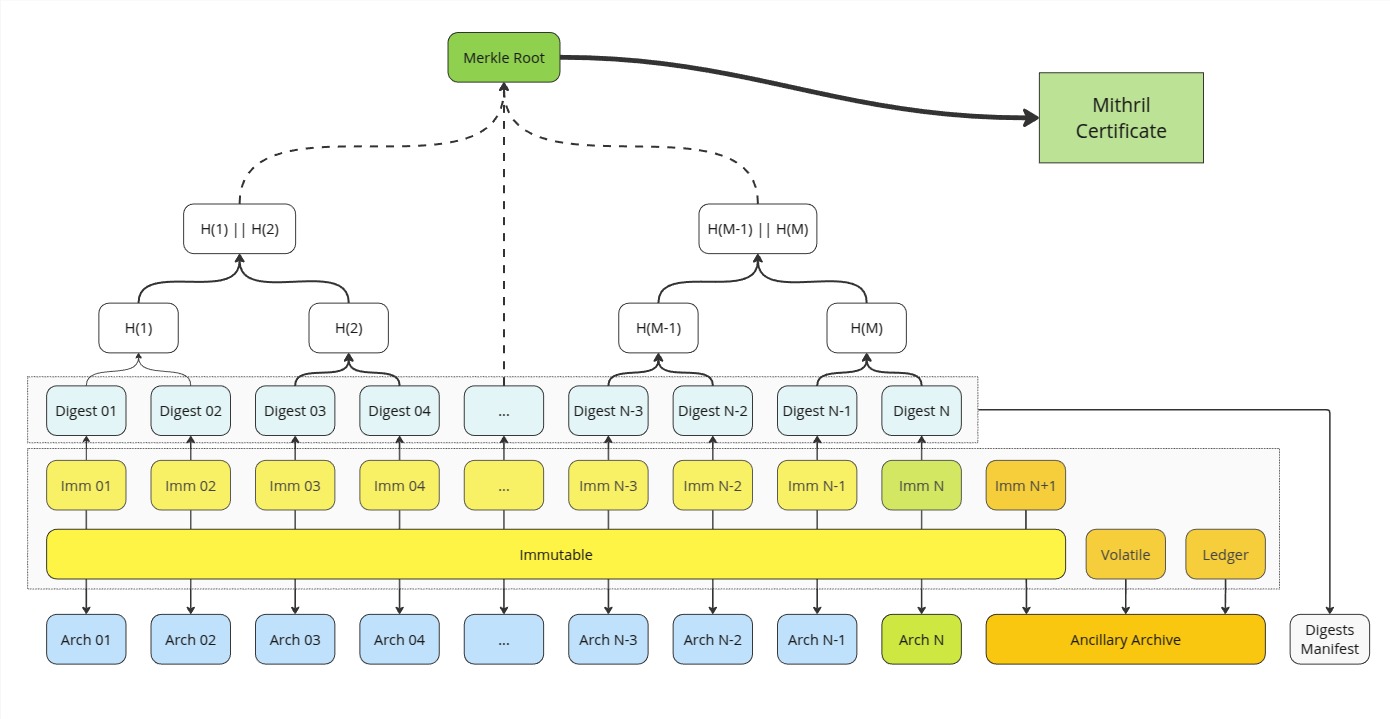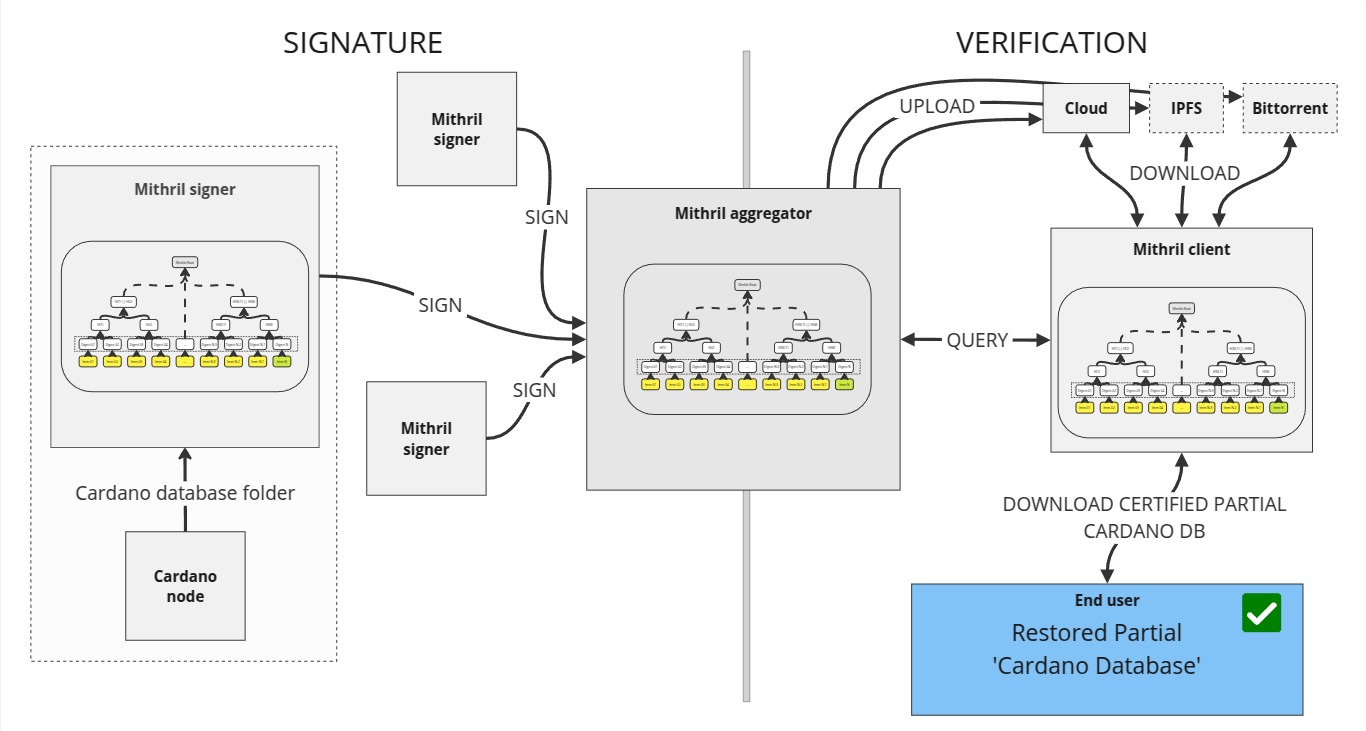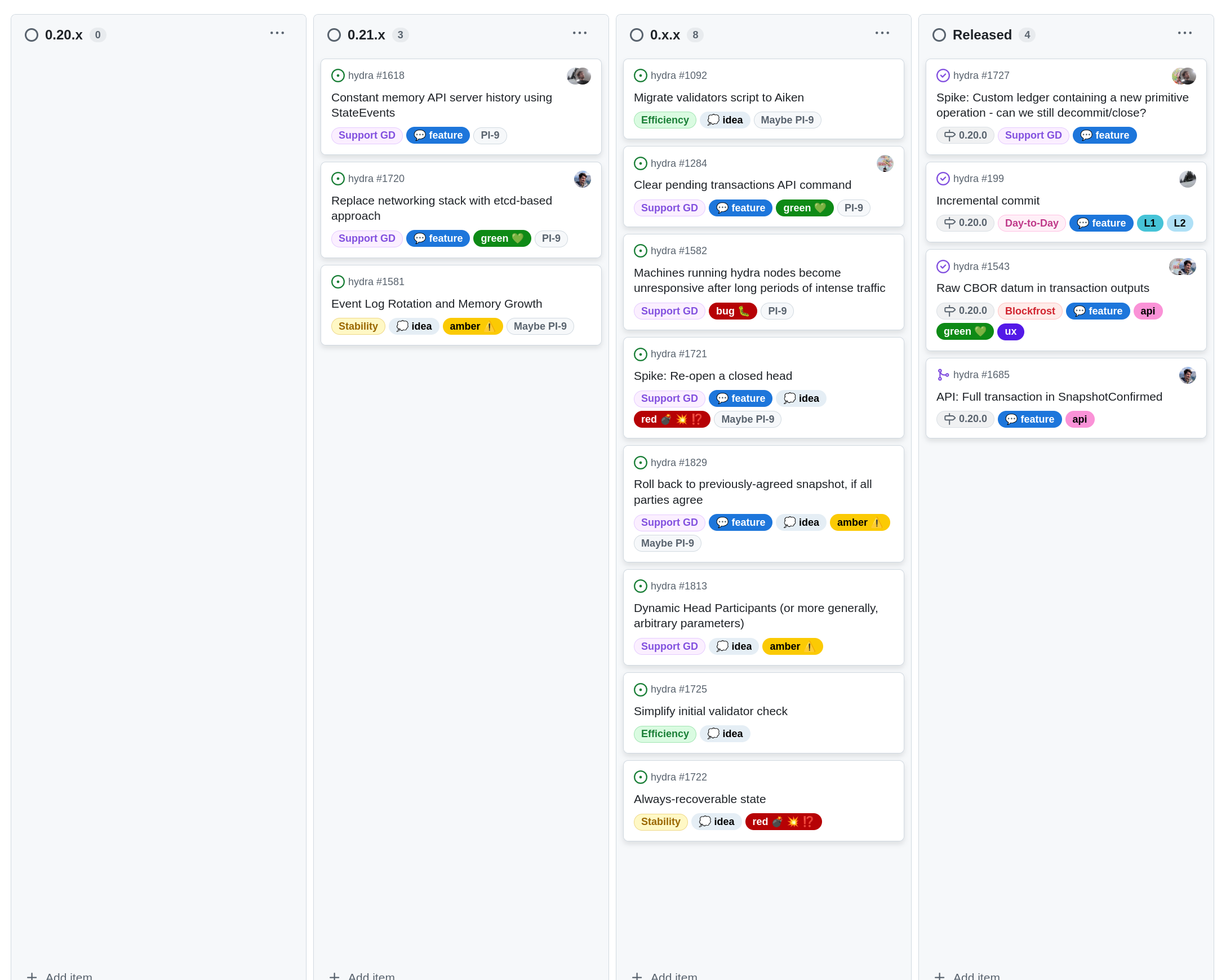This is a monthly report on the progress of 🐲 Hydra and 🛡 Mithril projects since December 2024. This document serves as a preparation for and a written summary of the monthly stakeholder review meeting, which is announced on our Discord channels and held on Google Meet. This month, the meeting was held on 2025-01-29 using these slides and you can see the recording here.
Mithril
Issues and pull requests closed in January
Roadmap
Below are the latest updates on our roadmap:
- Cardano stake distribution certification #955: the feature has been activated on
mainnet - Cardano database incremental snapshots MVP #2047: we have kept working on the MVP for incremental snapshots of the Cardano database
- Redesign the website and improve documentation #2051: the User manual and About Mithril sections have been restructured. The redesign is in progress.
Distributions
We released Mithril distribution 2450.0, which includes:
- 🔥 Breaking changes in the Mithril client library, CLI, and WASM with the removal of the deprecated
networkfield from the internalCardanoDbBeaconin Mithril certificates - Stable support for Cardano node
10.1.3in the signer and the aggregator - Stable support for one line shell installation script of the Mithril nodes' pre-built binaries
- Bug fixes and performance improvements.
In February, the following events are planned:
- Switch to the Pythagoras era on the
release-mainnetnetwork (at the transition to epoch539) - Re-genesis of the certificate chain of the
release-mainnetnetwork (at the end of epoch539) - Release of a new distribution at epoch
540.
Dev blog
We have published the following posts:
Incremental Cardano DB certification
We have worked on the signature and artifact production processes of the incremental Cardano DB certification. The features are now deployed on the developer networks and are being tested.
The incremental certification will provide the following benefits:
- Faster certification of the Cardano DB on the aggregator
- Capability to restore a partial Cardano database instead of the full one (by providing a range of missing immutable files)
- Capability to support an evolutive range of artifact storages, particularly decentralized storages (eg, IPFS or BitTorrent).


Website new structure
We have restructured the main sections of the website:
- the User manual section has been restructured to make the content more accessible and provide entries for each user profile
- the About Mithril section has been restructured to provide information for beginner and advanced user audiences.
SPO participation
We have worked on a plan to reach the full participation of SPOs in the Mithril network, which is essential for the security of the protocol:
- Phase 0: Guild Operators’ scripts adjustment
- Install Mithril by default (currently opt-in)
- Phase 1: node integration
- Bundle Mithril with the Cardano node
- Seamless integration
- Opt-out option
- Phase 2: centralized incentive mechanism
- Centralized reward distribution
- Treasury funded via external funds
- Phase 3: on-chain incentive mechanism
- On-chain reward distribution mechanism
- Treasury funded through revenues.
Protocol status
The protocol has operated smoothly on the release-mainnet network with the following metrics:
- Registered stake:
4.9B₳(25%of the Cardano network) - Registered SPOs:
250(9%of the Cardano network) - Full Cardano database restorations:
600restorations - Signer software adoption:
94%of the SPOs are running a recent version (one of the last three releases).
More information is available at the Mithril protocol insights dashboard.
Hydra
We've released incremental commits in version 0.20.0.
Issues and pull requests closed in January

Notable updates on our roadmap this month include:
- Released incremental commits #199
- Verifyed custom-ledger support #1727
- Full transaction in
SnapshotConfirmed#1685 - Raw CBOR datum in transaction outputs #1543
Hydra Doom finale
On January 24, 2025, the Hydra Doom tournament concluded with its finale at the C-Play Summit event at the HyperX Arena in Las Vegas. This live e-sports event featured finalists from previous hydra-doom stages battling in a multiplayer deathmatch on stage, using our reimagining of the 1993 first-person shooter Doom. For a high-level summary, see this Hackernoon article.
Let’s look a bit under the hood at what was deployed for this finale. Previous installments of the hydra-doom application processed player inputs and game state updates as Cardano transactions on a fleet of remotely hosted hydra-node processes and Hydra heads. This time, our fork of the Doom doom-wasm port used Hydra to create a net_module_t that converts Doom multiplayer network packets to Cardano transactions and uses the Cardano ledger in a Hydra head to exchange them between multiple players. On top of this, each player’s kills were also recorded 'on-chain' from similar transactions as used in the past. This allowed a referee Hydra participant to use the datum on-chain to update a 'Series' smart contract and gather kill totals as a datum in a Cardano UTXO (on layer 2).
Given the results of three deathmatch rounds, a winner was determined, and all finalists received prize tokens for 1st to 4th place. These tokens were minted before the finale on layer 1, committed into the head, and distributed to known finalist addresses in the head. Closing and finalizing this head onto mainnet distributed the prize NFTs.
The tournament’s head ID was d3ad8ab3bbaf06ccadd7076ff3a84eaca0771bb9dcea8bcce239eca9, and you can view the associated transactions here. This is the fanout transaction that distributed the prize tokens.
Using these tokens, the winners could redeem their prize money from smart contracts where the USDM prize money for the finale was locked, as seen here for the 1st place trophy.
Incremental commits
The incremental commits feature has been released in version 0.20.0. We invite community members to test-drive this feature. The goal is to ensure the best user experience and identify potential bugs.
Hydra + custom ledger experiment
We have verified that we can run a Hydra head with a customized layer 2 ledger. We merged a test that can be used for future interested parties to test this with their own forks.
Links
The monthly review meeting for January 2025 was held on 2025-01-29 via Google Meet, presenting these slides and this recording.

